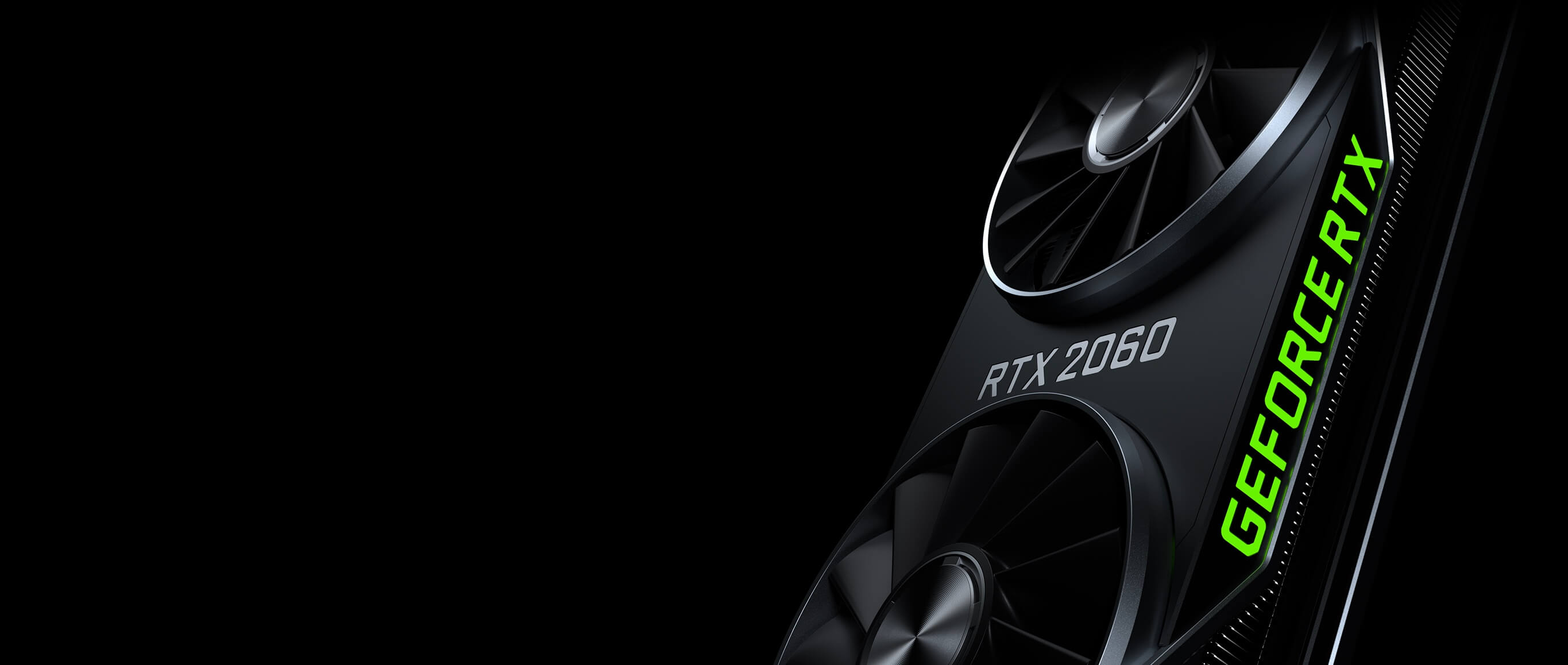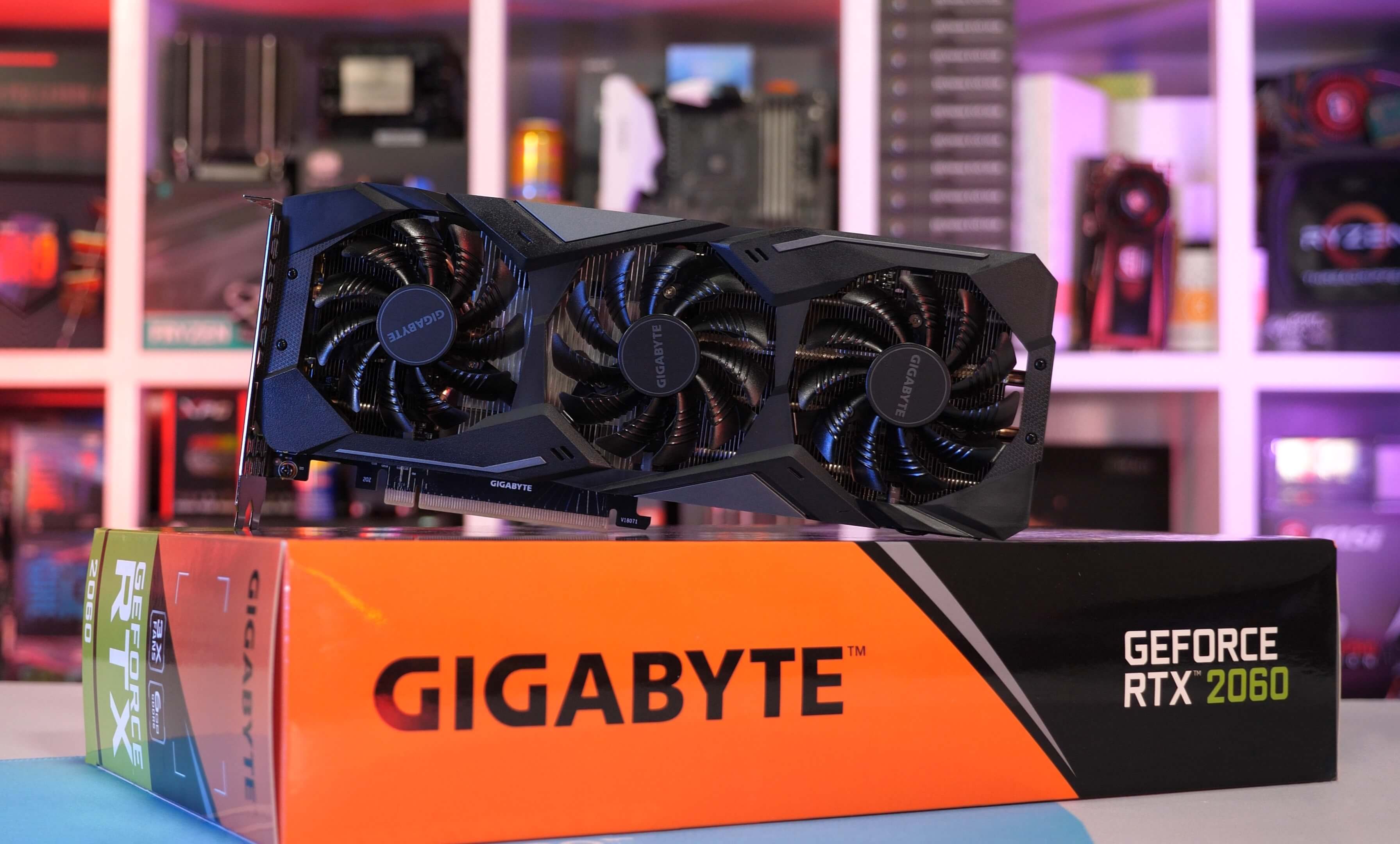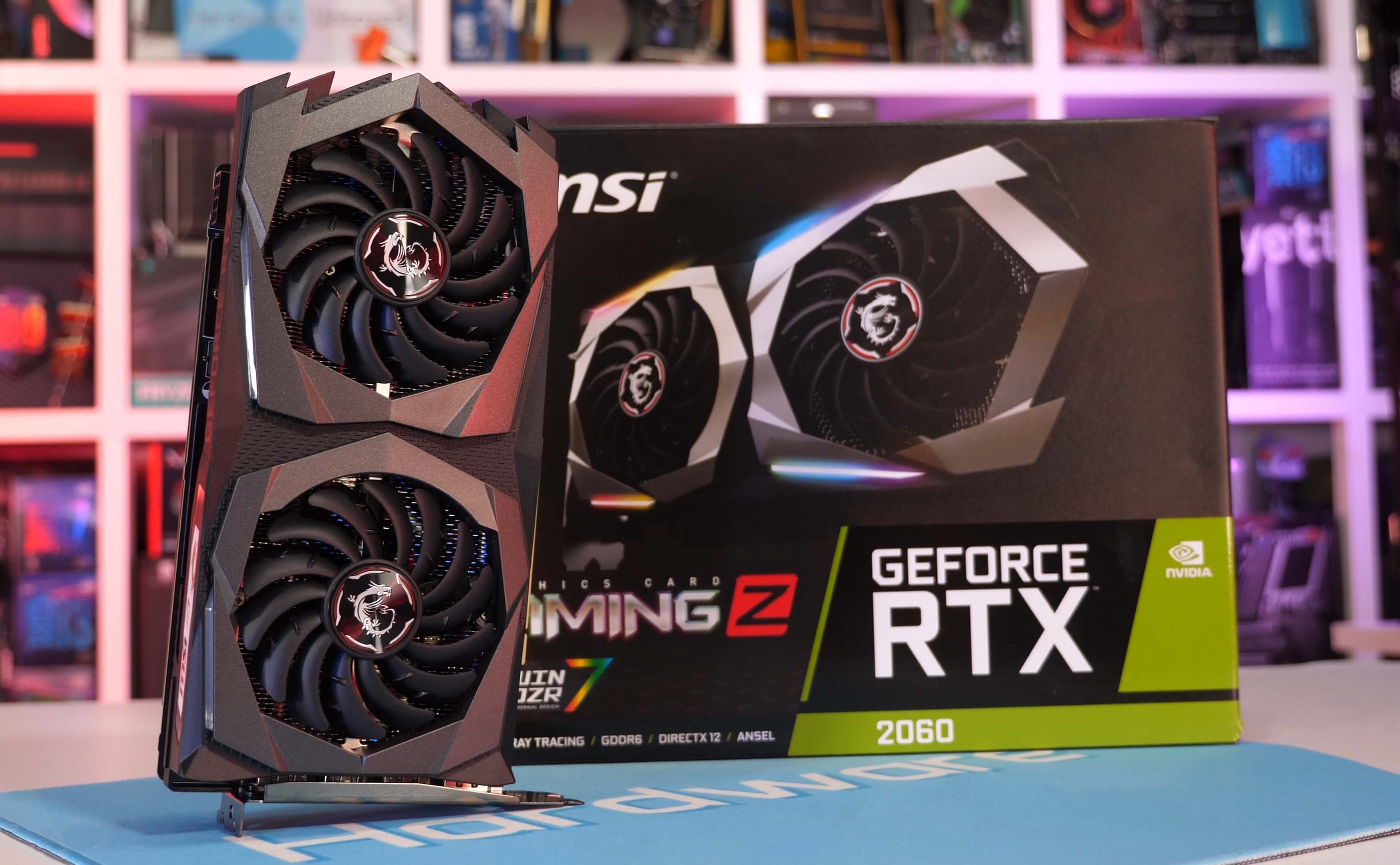Finally after an inevitable delay, it's time for our hands-on GeForce RTX 2060 coverage. The first reviews based on Nvidia's Founders Edition card went out on January 7th, the same day Nvidia officially introduced the card, but sadly we weren't included. Then cards started to appear on store shelves on the 15th, selling around the $350 MSRP. By then we had received our review samples but since we were technically already late, rather than rush in we decided to take our time and prove an extremely in-depth benchmark comparison.
Today we have a 36 game benchmark with over a dozen different GPUs. You will also find included a number of big performance breakdowns at the end of the article, along with the usual cost per frame stuff. By the time we're done you'll know exactly where the RTX 2060 stands, and what it has to offer gamers.
For testing we have the Gigabyte RTX 2060 Gaming OC Pro and the MSI RTX 2060 Gaming Z. Both are great looking boards, but since the Gigabyte card arrived first that's what we used for all the testing. Later on we'll look into providing better detail about thermals and other elements that are reserved for individual graphics card reviews as those will vary from one model to the next.
As for the RTX 2060 GPU... it's an interesting proposition. Whereas the RTX 2070 comes in at $500, the RTX 2060 is 30% cheaper at $350 yet packs just 17% fewer CUDA cores. It uses the same 14Gbps GDDR6 memory but the memory bus has been cut down by 25%, meaning memory bandwidth has been reduced by that amount. RT cores have also been lowered from 36 to 30.
Still the RTX 2060 shouldn't be a great deal slower than the RTX 2070, so in terms of value it's likely a better product. It's also priced to compete with AMD's Vega 56, so it'll be interesting to see how those two compare.
Getting on with the benchmark results, out of the 36 games tested we'll discuss individually the most noteworthy ones and then jump into our breakdown analysis with all the data. Our GPU test system consisted of a Core i9-9900K clocked at 5 GHz with 32GB of DDR4-3200 memory. We used AMD's Adrenalin 2019 Edition 19.1.1 drivers for the Radeon GPUs and Game Ready 417.35 WHQL for the GeForce GPUs.
Benchmarks
To kickstart things off we have Shadow of the Tomb Raider. Here the RTX 2060 was good for 63 fps on average using the highest in-game quality preset. This placed it on par with the GTX 1080 and Vega 64, making it just 5% slower than the RTX 2070. It was also 9% faster than the GTX 1070 Ti, though just 3% faster than Vega 56.
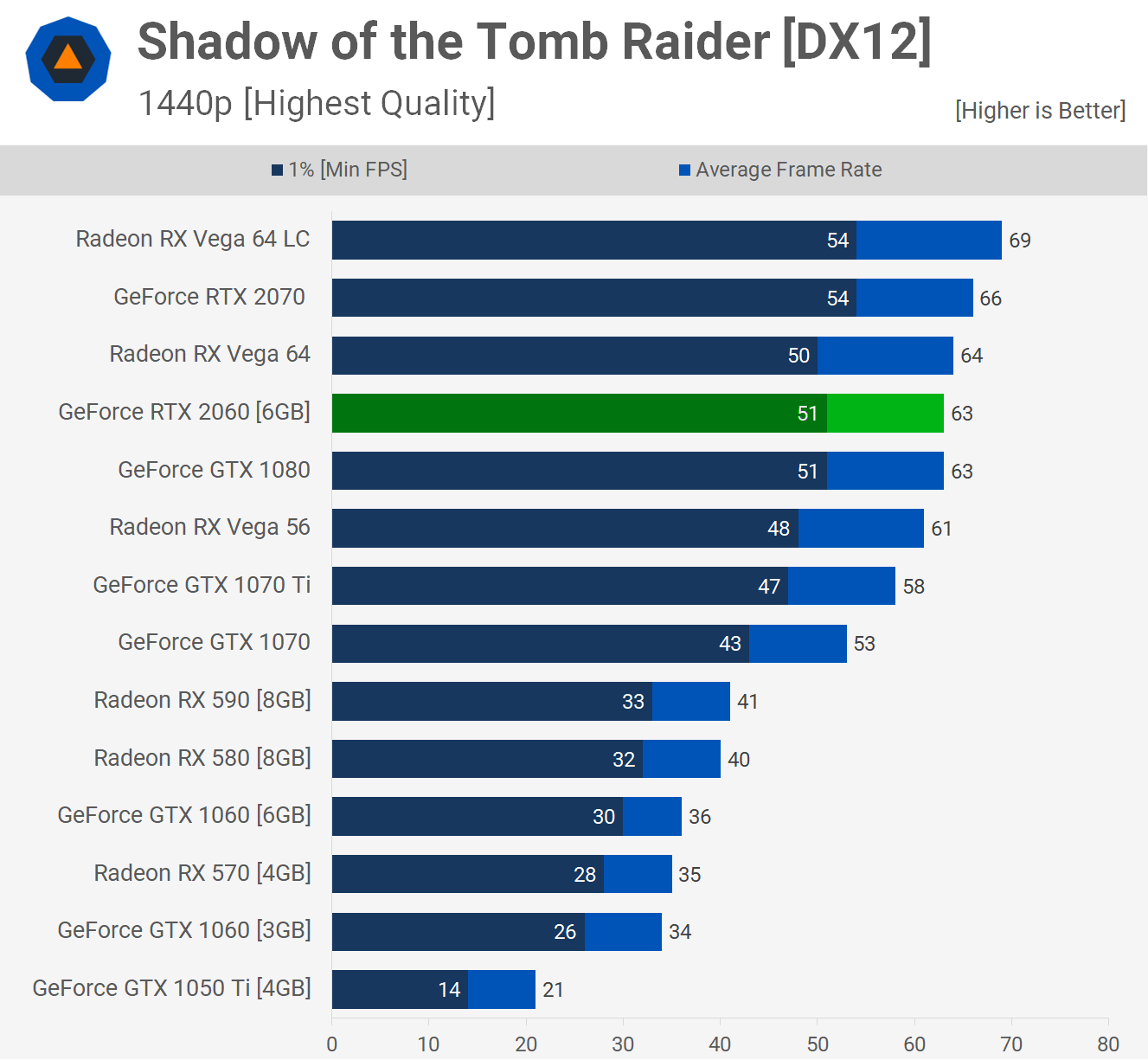
Moving on to Strange Brigade, the RTX 2060 was good for 86 fps on average or 15% slower than the RTX 2070 this time. It was also 7% slower than Vega 56, though that's not surprising considering how well this title runs on AMD hardware. Still the RTX 2060 edged out the GTX 1070 Ti, so overall performance was very respectable.

The RTX 2060 performs very well in Battlefield V, trailing the RTX 2070 by a mere 4% margin. It was able to beat the GTX 1070 Ti and Vega 56, so far the RTX 2060 is making the RTX 2070 look rather pointless.
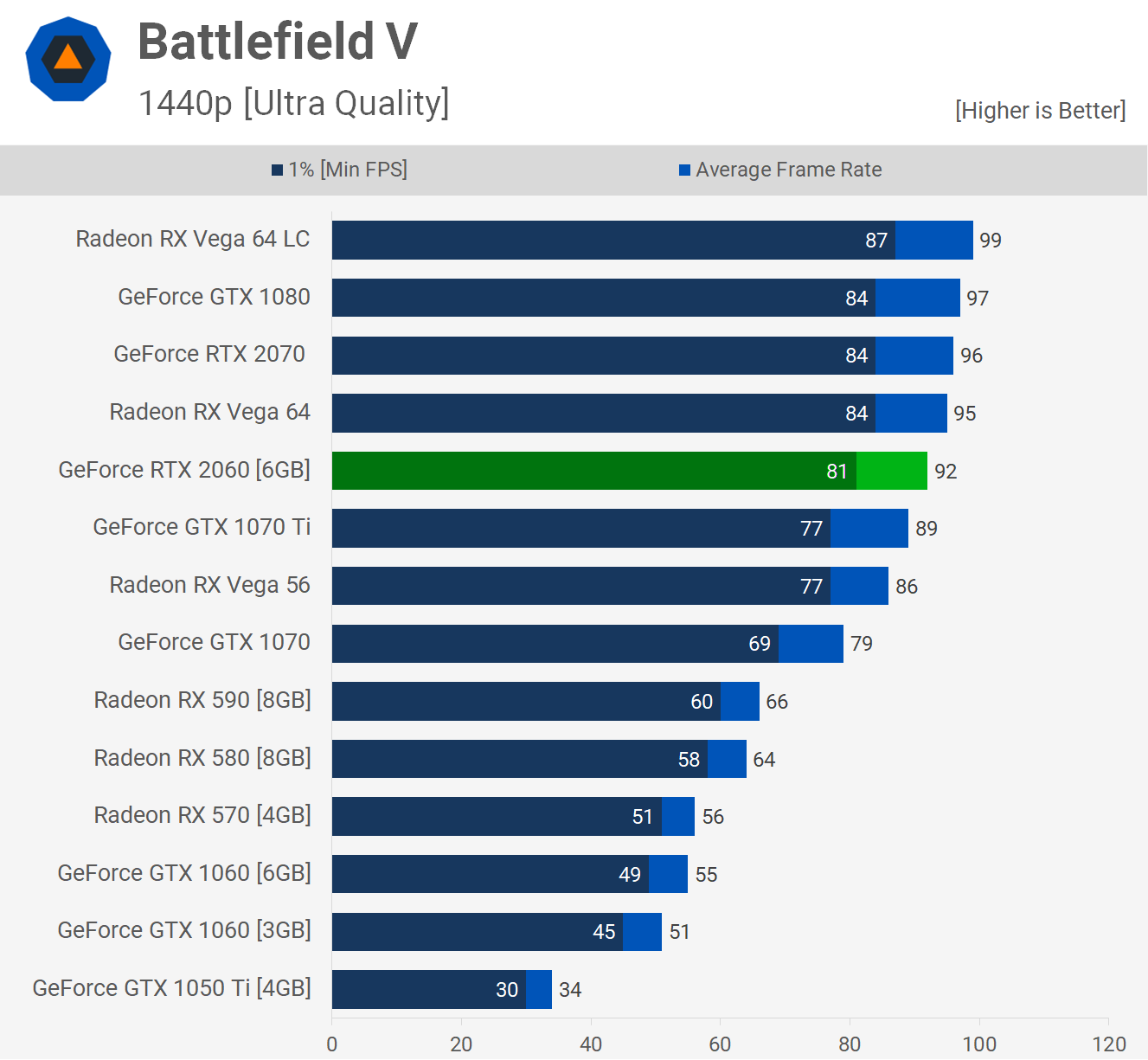
The RTX 2070 does pull away when testing with Sniper Elite 4, here the RTX 2060 was 15% slower but that's not a massive margin given it costs 30% less. Also we see that the 2060 is able to sit on top of the GTX 1070 Ti and Vega 56.
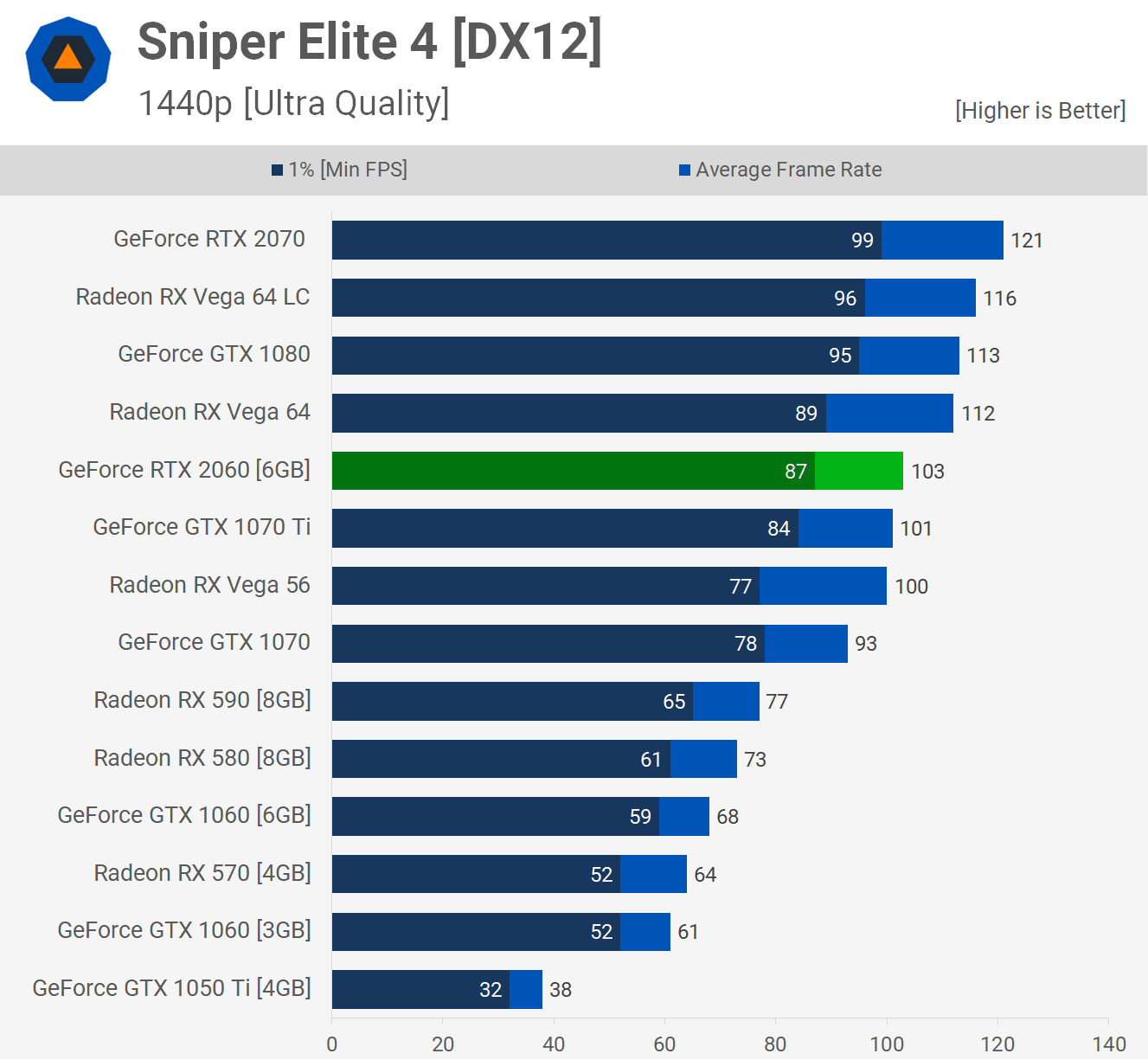
Monster Hunter World plays quite well with the RTX 2060 at 1440p. Using the highest quality preset we saw an average of 54 fps and this meant the 2060 was barely any slower than Vega 64 and the GTX 1080. It was also 4 to 5 fps faster than the GTX 1070 Ti and Vega 56 on average. Moreover, it was just 11% slower than the RTX 2070.

The new Turing GPUs don't stack up that well in Warframe when compared to their Pascal predecessors. The RTX 2070, for example, is 8% slower than the GTX 1080, meanwhile the RTX 2060 is 6% slower than the GTX 1070 Ti and just 2% slower than Vega 56.

Moving on we have Just Cause 4. Here the RTX 2060 averaged 59 fps making it just a few frames slower than the GTX 1080 and Vega 64. It was also 11% slower than the RTX 2070 and Vega 64 Liquid. Frame time performance was similar from the GTX 1070 right up to the GTX 1080.

